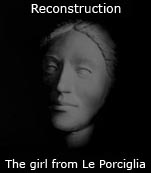



|
The
Archeological Museum, Ranuccio Bianchi
Bandinelli is located on the first three floors of a 15th
century building called Palazzo
del Podestà and contains Etruscan finds from Alta Valdelsa,
in particular from Colle di Val d’Elsa and Monteriggioni. The first part of the Museum was formed in the 70s when some members of the Archeological Association “Gruppo Archeologico Colligiano” took part of the negotiations between the municipal administration and Countess Terrosi, the owner of one of the most important collections of the area, “Collezione Terrosi” that she would like to sell. Terrosis collected it between the 19th and 20th centuries during the excavations in their estates of Piana del Casone. The municipal administration bought many finds from her and in particular what came from the family hypogeum Calisna Sepu discovered at the end of 19th century and studied by the archeologist Ranuccio Bianchi Bandinelli in the 20s. Since then the Archeological Museum has become larger and larger with new collections brought by the members of “Gruppo Archeologico Colligiano” who have been preserving and safekeeping the historical/archeological wealth of this area for more than thirty years. Nowadays it is one of the most important museums in the Sienese area with tomb collections, finds and reconstructions of great value, e.g. the reconstruction of an Etruscan kiln that dates back to the third century B.C. discovered in Quartaia (near Colle di Val d’Elsa) and various finds coming from the greatest Etruscan necropolis of the area, Le Ville and Dometaia. Anyway, the most important exhibitions are: the outfit of the late Eastern tomb located in Campiglia dei Foci and called Pierini’s Tomb (the owner of the estate in which it was discovered) containing a twin vase with a dedicatory inscription that dates back to the sixth century; and last but not the least, a wonderful reconstruction made by the University of Pisa of an Etruscan girl’s face who was buried 2,500 years ago in a grave in Loc. Le Porciglia. |
| NEWS: |


